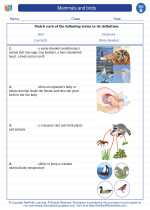Sand Dunes
Sand dunes are large mounds or ridges of sand found in coastal and desert areas. They are formed by the wind carrying sand particles and depositing them in a specific location. The formation of sand dunes is influenced by several factors, including wind direction, sand availability, and the presence of obstacles that affect the wind flow.
Formation of Sand Dunes
There are four main types of sand dunes based on their shape and formation:
- Barchan Dunes: These dunes are crescent-shaped and form in areas with consistent wind direction.
- Transverse Dunes: These dunes form perpendicular to the wind direction and create a series of ridges and troughs.
- Longitudinal Dunes: These dunes form parallel to the wind direction and often occur in areas with limited sand availability.
- Star Dunes: These dunes have multiple arms and form in areas with variable wind directions.
Characteristics of Sand Dunes
Some key characteristics of sand dunes include:
- Crest: The highest point of the dune.
- Slip Face: The steep, leeward side of the dune where sand slides down due to gravity.
- Windward Side: The side of the dune facing the prevailing wind, which is usually gentle and has a gradual slope.
- Migration: Sand dunes are dynamic and can move over time, a process known as dune migration.
Importance of Sand Dunes
Sand dunes play a crucial role in coastal protection, as they act as natural barriers against storm surges and erosion. Additionally, they provide habitats for various plant and animal species adapted to the harsh desert environment. Sand dunes also have cultural significance and are popular tourist attractions in many regions.
Study Guide
Here are some key points to remember about sand dunes:
- Describe the formation of sand dunes and the factors that influence their shape.
- Identify the different types of sand dunes and their unique characteristics.
- Explain the importance of sand dunes in coastal protection and ecosystem diversity.
- Discuss the role of wind in shaping and moving sand dunes over time.
Understanding the formation and significance of sand dunes is a fascinating aspect of earth science, and studying this topic can provide valuable insights into the dynamic interactions between wind, sand, and the environment.
[Sand Dunes] Related Worksheets and Study Guides:
.◂Science Worksheets and Study Guides Second Grade. Mammals and birds

 Activity Lesson
Activity Lesson
 Worksheet/Answer key
Worksheet/Answer key
 Worksheet/Answer key
Worksheet/Answer key
 Worksheet/Answer key
Worksheet/Answer key
 Worksheet/Answer key
Worksheet/Answer key
 Vocabulary/Answer key
Vocabulary/Answer key
